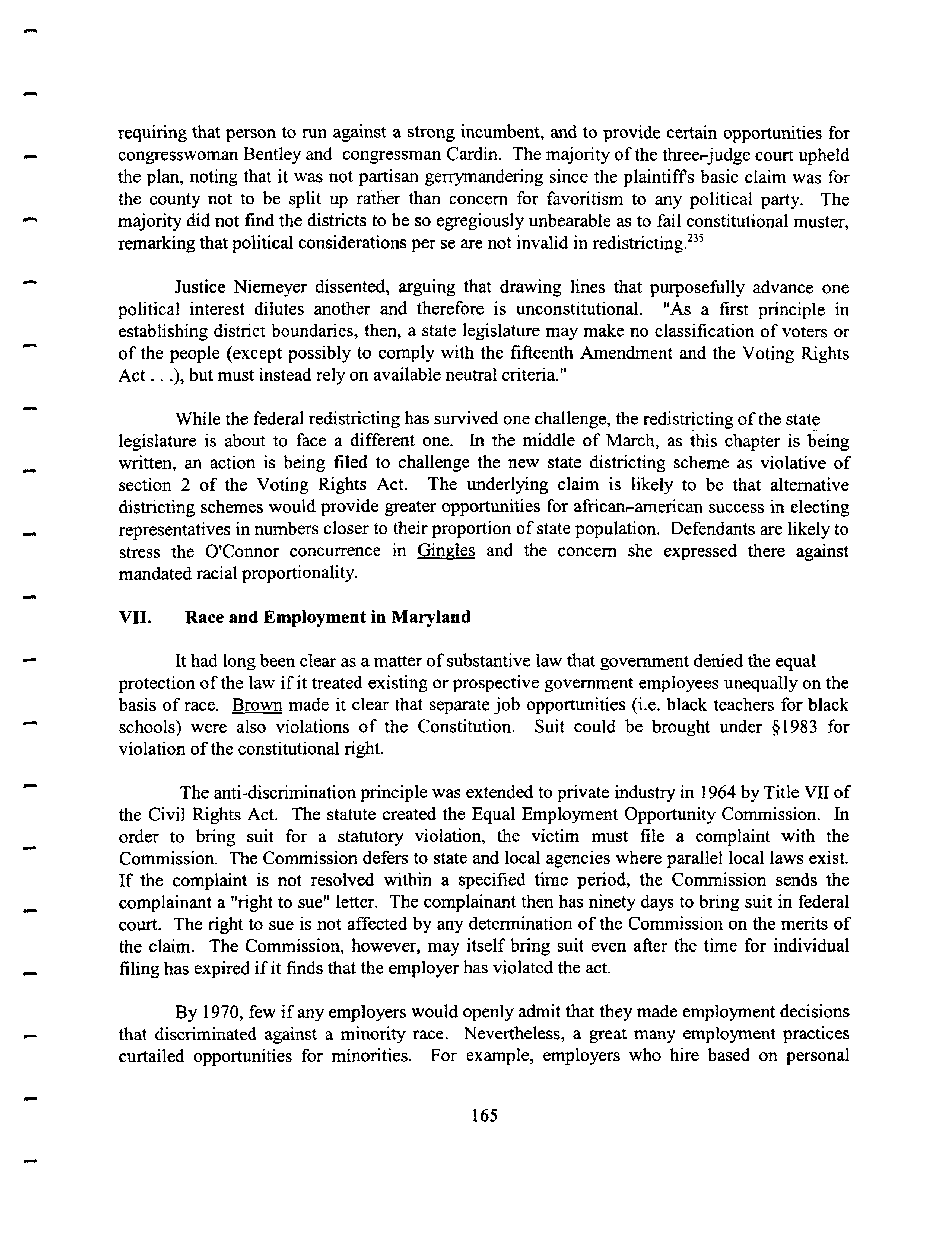|
requiring that person to run against a strong incumbent, and to provide certain opportunities for
congresswoman Bentley and congressman Cardin. The majority of the threei-judge court upheld
the plan, noting that it was not partisan gerrymandering since the plaintiffs basic claim was for
the county not to be split up rather than concern for favoritism to any political party. The
majority did not find the districts to be so egregiously unbearable as to fail constitutional muster,
remarking that political considerations per se are not invalid in redistricting.235
Justice Niemeyer dissented, arguing that drawing lines that purposefully advance one
political interest dilutes another and therefore is unconstitutional. "As a first principle in
establishing district boundaries, then, a state legislature may make no classification of voters or
of the people (except possibly to comply with the fifteenth Amendment and the Voting Rights
Act.. .), but must instead rely on available neutral criteria."
While the federal redistricting has survived one challenge, the redistricting of the state
legislature is about to face a different one. In the middle of March, as this chapter is being
written, an action is being filed to challenge the new state districting scheme as violative of
section 2 of the Voting Rights Act. The underlying claim is likely to be that alternative
districting schemes would provide greater opportunities for africanr-american success in electing
representatives in numbers closer to their proportion of state population. Defendants are likely to
stress the O'Connor concurrence in Gingles and the concern she expressed there against
mandated racial proportionality.
VII. Race and Employment in Maryland
It had long been clear as a matter of substantive law that government denied the equal
protection of the law if it treated existing or prospective government employees unequally on the
basis of race. Brown made it clear that separate job opportunities (i.e. black teachers for black
schools) were also violations of the Constitution. Suit could be brought under §1983 for
violation of the constitutional right.
The anti-discrimination principle was extended to private industry in 1964 by Title VII of
the Civil Rights Act. The statute created the Equal Employment Opportunity Commission. In
order to bring suit for a statutory violation, the victim must file a complaint with the
Commission. The Commission defers to state and local agencies where parallel local laws exist.
If the complaint is not resolved within a specified time period, the Commission sends the
complainant a "right to sue" letter. The complainant then has ninety days to bring suit in federal
court. The right to sue is not affected by any determination of the Commission on the merits of
the claim. The Commission, however, may itself bring suit even after the time for individual
filing has expired if it finds that the employer has violated the act.
By 1970, few if any employers would openly admit that they made employment decisions
that discriminated against a minority race. Nevertheless, a great many employment practices
curtailed opportunities for minorities. For example, employers who hire based on personal
165
�
|

